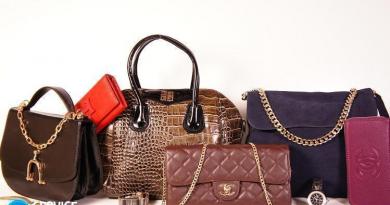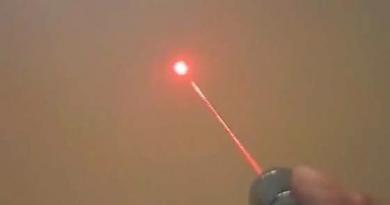Publication date: February 15, 2016 .
A car child seat is not a design element of the car's interior and is not a child-friendly seat. Today, the presence of a car seat is mandatory if you are transporting children under the age of 12, otherwise a fine of 3,000 rubles will be imposed on the owner of the car. Such requirements appeared for a reason, they are dictated by inexorable statistics, which clearly reflects the data according to which the presence of a child seat in a car can actually save the life of a baby.
But it’s not enough just to buy a seat, you need to take into account the age, weight and height of the child. And also check with the seller how to fix the child seat in the car. Today, there are two methods of such fastening: regular three-point belts or using the Isofix system.
Mounting options for a child seat in a car
Consider the universal and more "advanced" methods of attaching a seat in a car:
Fastening with standard belts
Since every car is equipped with seat belts, this method is considered the most simple and convenient. In fact, everything is not so simple, because this procedure has several drawbacks. First, it is considered not the most reliable. Secondly, when installing a category 0 seat, the length of the belts may not be enough.
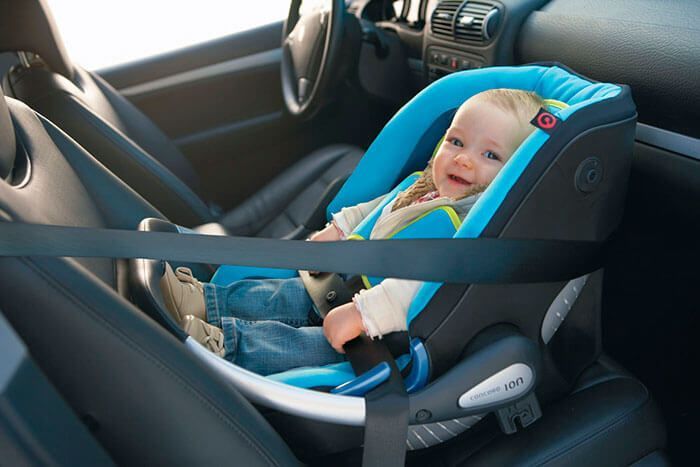
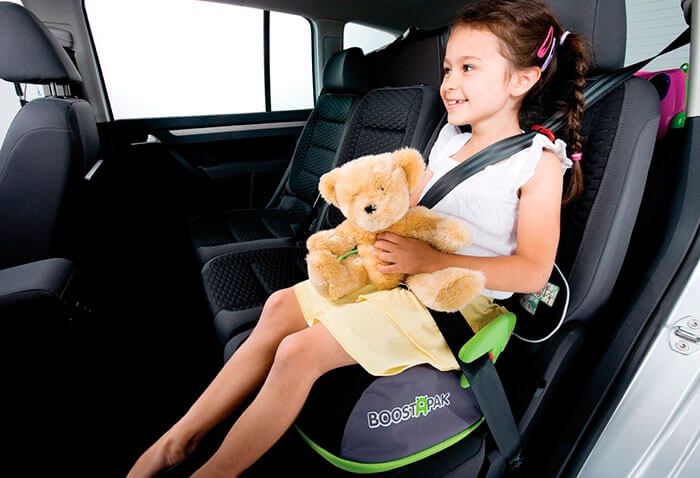
Important! If the length of the car belts is not enough to securely fix the child seat, it is not recommended to increase the belts yourself. It is better to contact a car dealer or service department so that specialists replace this element.
For fastening with standard products, make sure that there are marks on the body of the chair in the places where the belts pass (red if the chair is intended for installation in the direction of travel, blue - against the direction of travel). At the same time, do not forget about the mounted fasteners (internal five-point belts). Usually, only products of category 0, 0+ and 1 are equipped with such parts. Child seats of groups 2 and 3 do not have such elements, so it is important to make sure that the child seat is fastened in the car with high-quality standard belts.
Mounting via Isofix system
The Isofix system has a standard design, so any brand of seat will work with it. Thanks to the locks on the seat and special steel hinges installed in the vehicle, the most reliable fixation of the car seat is carried out. When compared with the previous method, according to studies, when fastening with conventional seat belts, more than 60% of users make mistakes. In the case of Isofix, such shortcomings are reduced to almost zero.
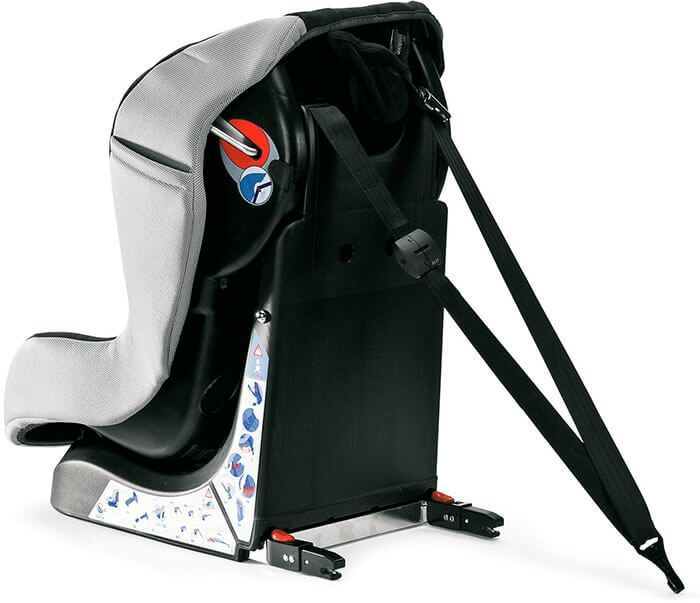
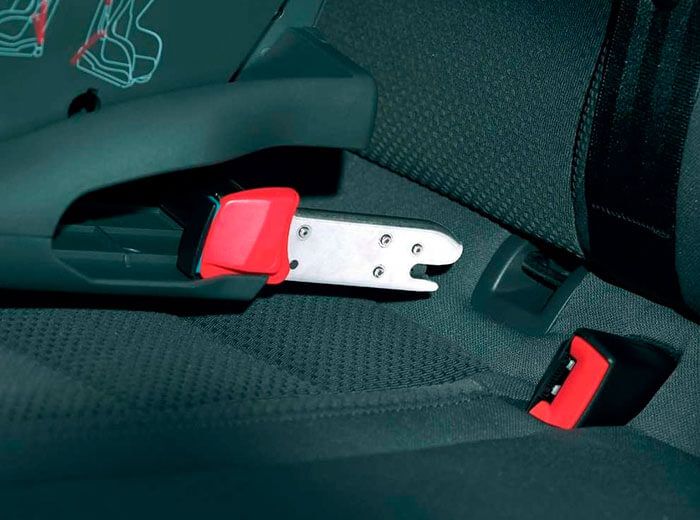
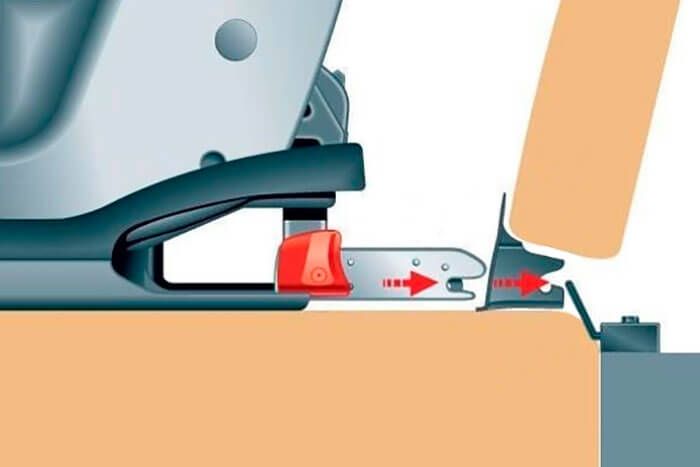
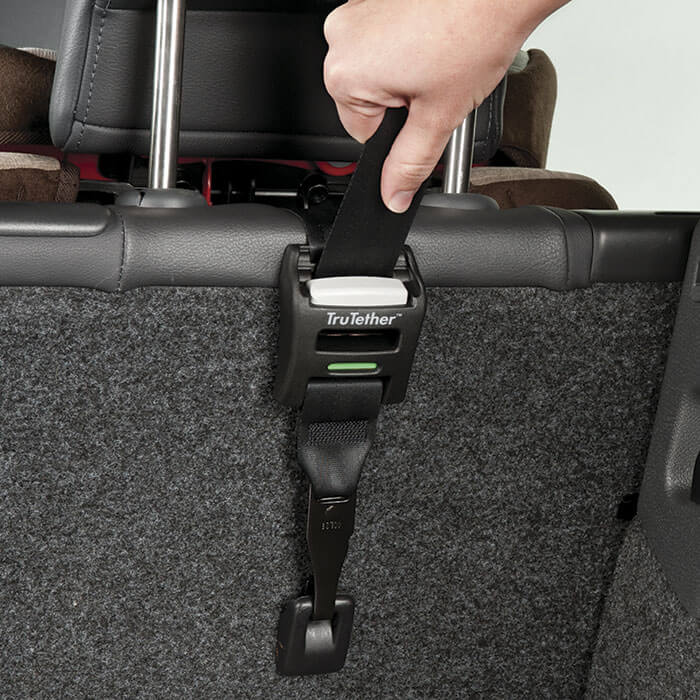
It is worth noting that reliable brackets can be placed between the cushion and the back of both the rear and front passenger seats. In addition, the locks are easy to release when you want to pull out the carrycot-shaped category 0 seat.
Important! Installing a child seat in the front seat is not recommended by experts, as the passenger seat is considered one of the most dangerous in the car.
Since this system only secures the lower part of the car seat, it is recommended to use an anchor belt to further protect the child from “nodding”.
Other fastening methods
Today, there is also a “base” mounting option, which is considered one of the most convenient and reliable for the 0+ age group. The fasteners are based on a special platform that cannot be removed from the car and is fastened either through Isofix or using standard belts. The base is fixed with fasteners and clamps.
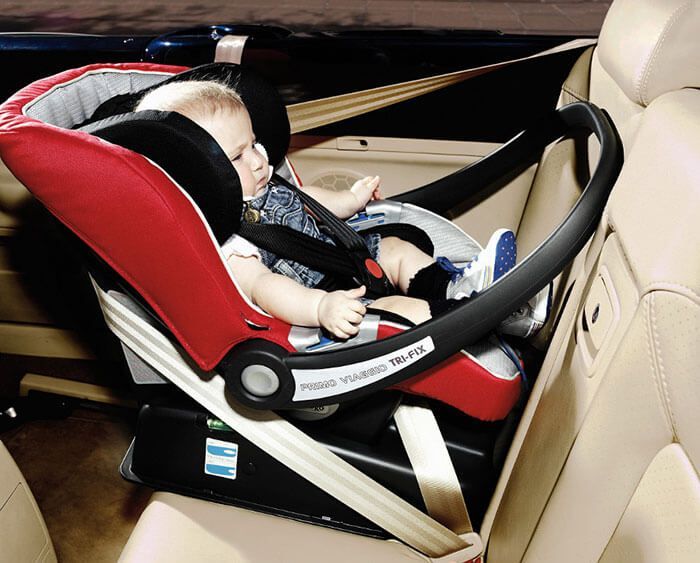
There is an American analog Super Latch system, which allows you to fasten the chair with special belts and brackets, but it has been abandoned in Europe today.
As for the direction of the seat and other nuances, then there are rules.
Fixing the car seat depending on the category of the seat
In order to fix the chair in accordance with all the rules, it is necessary to take into account the age of the child and the category of the chair purchased. Not always the safest place, from the parent's point of view, is the right place, so in order not to make a mistake, remember:
- Chairs of category 0 (cradles for the smallest ones) can only be installed on the back seat, with the headboard away from the doors. In this case, the cradle should be located perpendicular to the movement of the car.
- Products of group 0+ can also be installed exclusively in the rear seat, only in this case the child must already sit against the direction of the vehicle. Car seats 0+ can be located in the front, but only if there is no airbag in this place.
Important! In combined category 0+/1 seats, the belt must be fastened below the child's shoulder.
- Category 1 seats are rear mounted, although front mounting is also possible. In both cases, the child must sit in the direction of travel. A prerequisite is the presence of an internal five-point belt. The main belt in this case is located just above the level of the child's shoulder.
- Group 2 car child seats are installed in both the rear and front seats. The child in this case is located facing in the direction of travel. The belt must pass through the center of the young passenger's shoulder.
- Chairs of category 3 (boosters) do not have side walls and backs. Such products can be mounted both in front and behind. The child travels in the direction of the car.
In addition to these nuances, there are also general recommendations and useful tips for installing child car seats.
How to install a child car seat correctly
As mentioned earlier, many parents do not install a car seat for a child quite correctly, in order to avoid these shortcomings, follow a few tips:
- Read the instructions that came with the child seat in detail, as depending on the model of the product, the installation method may also differ.
- The most reliable place to mount the seat is the middle seat in the rear seat.
- Before installing the seat, move the front seat so that it does not interfere with your work.
- Once you have placed the car seat in the back seat, run the seat belt over the marked area. At the same time, do not be afraid to apply maximum force by tightening the straps. If the seat is equipped with special clamps, this will greatly simplify this procedure. Some seat belts have removable clips. If they are, then you can simply pull the belt out to its full length, snap it, when it returns, it will fasten itself. If there are no such clamps, use connecting elements.
- After fixing, you need to make sure that the belt is securely fastened in the shoulder area, while its waist part will be responsible for fixing the chair.
- During installation, make sure that the mating part of the seat belt does not come into contact with parts or parts of the child seat.
- Take the time to adjust the height of the stock belt guide. If this element is too high, then in the event of an accident or a sharp jerk of the car, it can squeeze the child's neck.
- After installation, move the chair in different directions, if it “plays” a little, then this is normal. But, if the seat moves more than 2 centimeters, then the product must be removed and reinstalled.
- Put the child in the car seat and fasten it with all belts. The gap between the belts and the body of a young passenger should be small, no more than 2 fingers.
- If after each use of the chair, you take it home, then each subsequent installation should be done with all care. And if the seat is in the car all the time, then still check all the fasteners before the trip.
And the last thing you need to pay attention to all the time - in no case should the belts be twisted or tangled.
In custody
Before fastening the child seat in the car, the video instruction below, carefully read the instructions and make sure that the fasteners do not have any defects. Car seats for children are designed to keep your child safe on the road, so carefully follow all recommendations and installation rules for this product.

